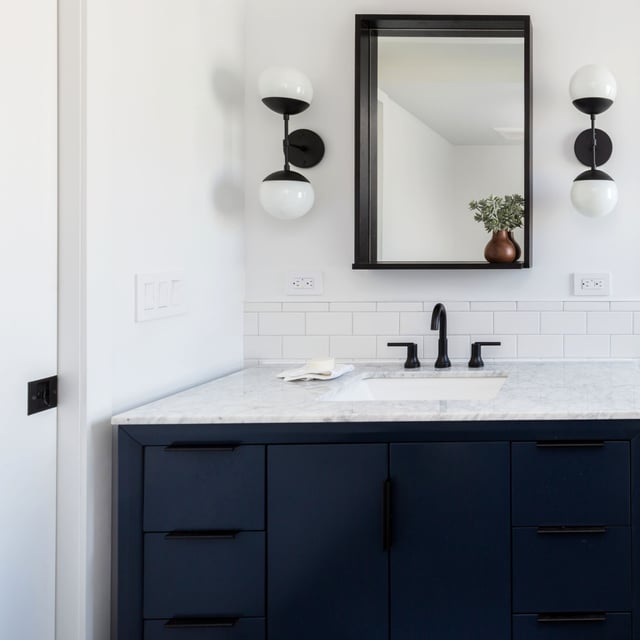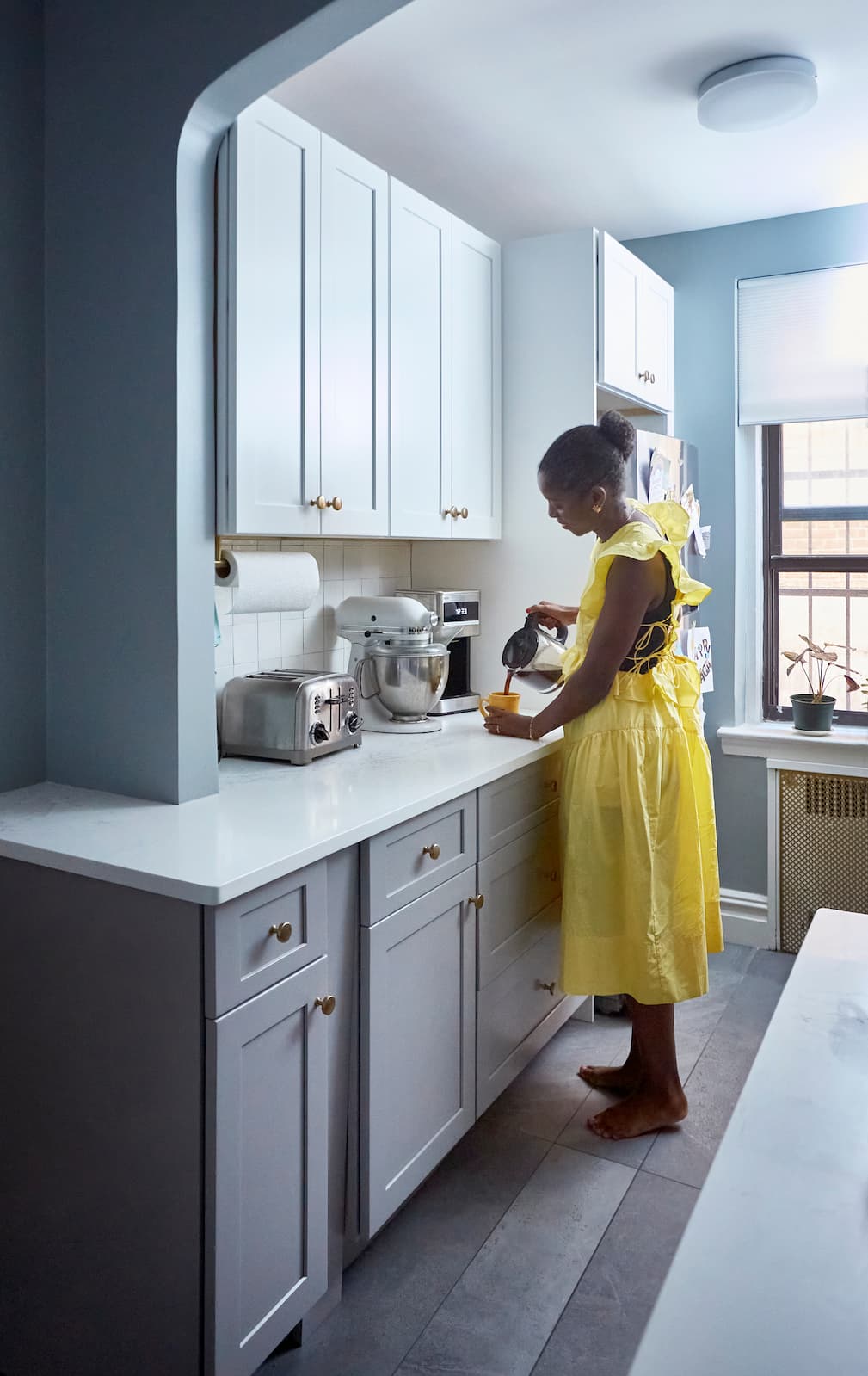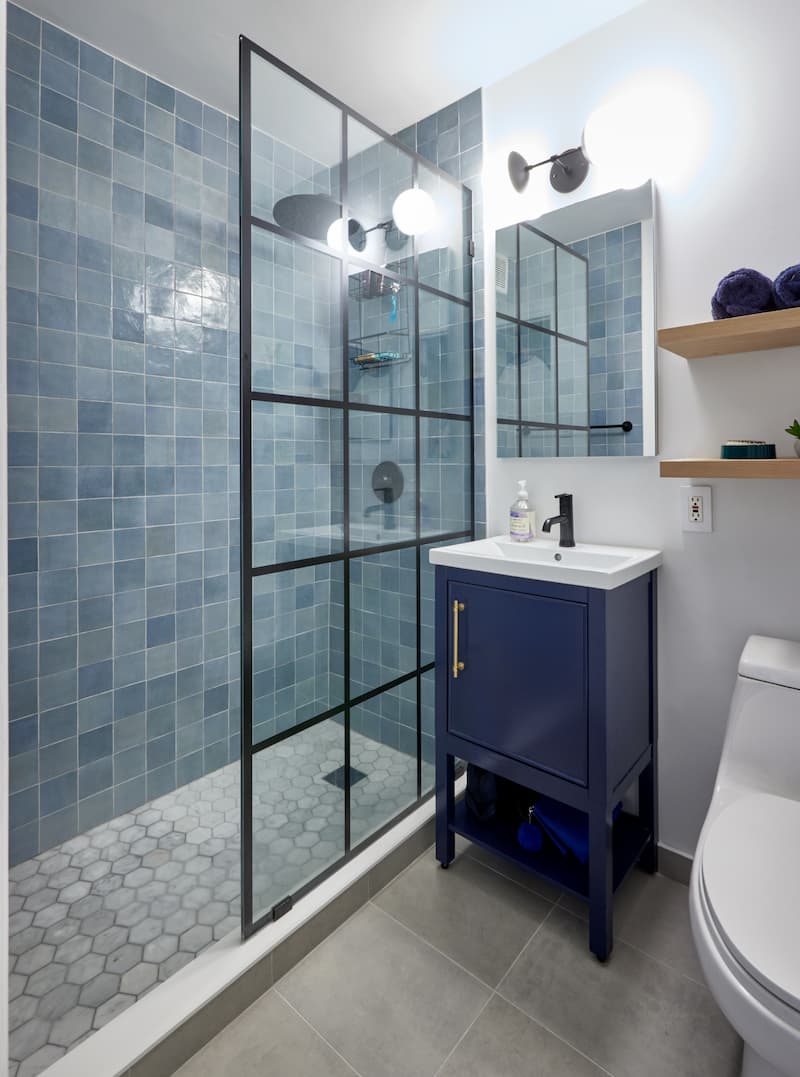A Homeowner’s Guide to Pocket Door Installation

In This Article
If you’re trying to make the most of your square footage—or just want a cleaner, more open feel—pocket doors offer a smart alternative to traditional swinging doors. They slide directly into the wall, disappearing from sight when open, which makes them especially useful in tight layouts or modern spaces where every inch counts.
This guide covers everything you need to know about pocket door installation, from picking the right style and material to understanding the ins and outs of installation and cost.
Homes That Are Well-Suited for Pocket Door Installation
Pocket doors aren’t just a space-saving trick—they can work beautifully in almost any home. That said, some layouts are especially well-suited for them, whether it’s about maximizing flow or making the most of a tight footprint:
- Small rooms or tight spaces: A pocket door can make the room feel larger and more functional in compact areas where a swinging door would take up valuable floor space, like bathrooms, laundry rooms, or pantries.
- Open-concept layouts: Pocket doors allow you to close off spaces when needed for privacy (like a home office or guest room) without permanently dividing the space.
- Historic homes: Many buildings from bygone eras—like postwar and Victorian homes—originally featured pocket doors. Restoring or adding them can enhance period charm while improving flow.
- Modern and minimalist interiors: The clean lines and hidden hardware of pocket doors suit contemporary design aesthetics.
- Accessible design: Pocket doors can be easier to operate for people with mobility challenges, especially when equipped with accessible hardware.
Before you commit, take a close look at your wall setup. Pocket doors need enough space inside the wall to slide fully open—and that space has to be clear of things like plumbing or major electrical lines. We’ll break down what that means (and how to work around it) in the installation section.
Design a Home That’s Uniquely Yours
Block can help you achieve your renovation goals and bring your dream remodel to life with price assurance and expert support.
Get Started
Different Types of Pocket Door Materials
Pocket doors come in various materials, each with its own look, feel, and benefits. The right choice depends on your style, budget, and how you plan to use the door.
- Solid Wood: Classic and durable, solid wood pocket doors provide strong sound insulation and classic style. They’re ideal for anywhere privacy is a priority, such as an ensuite bathroom or at-home office renovation.
- Hollow Core: Lightweight and affordable, hollow core doors are easy to install and work well for closets or less frequently used spaces. However, they provide less soundproofing than solid wood and may not be ideal for bedrooms or bathrooms.
- Glass: Frosted, clear, or decorative glass pocket doors let in natural light while still providing separation. They’re popular for home offices and spaces where you want a more open feel.
- Metal: Sleek and modern, metal pocket doors (often aluminum or steel) are durable and can make a bold design statement. They’re less common in residential settings but are gaining popularity in contemporary homes.
- Composite or MDF: Medium-density fiberboard (MDF) and other composite materials offer a smooth finish and can be painted to match any décor. They’re a budget-friendly alternative to solid wood.
When choosing a material, consider appearance, weight (heavier doors require sturdier hardware), sound insulation, and maintenance needs.
How Much Does Pocket Door Installation Typically Cost?
Pocket door installation costs vary based on your home’s layout, wall type, and the materials you choose.
- New construction: Installing a pocket door during a remodel or new build is generally less expensive, since the wall framing can be designed to accommodate the door from the start. Expect to pay $500–$1,500 for materials and labor, depending on the door and hardware.
- Retrofitting an existing wall: This is more complex and costly, as it involves removing drywall, rerouting wiring or plumbing, and reframing the wall. Installing a pocket door in an existing wall typically ranges from $1,000 to $3,500 or more.
- Door and hardware: Standard pocket door kits start at $150–$400, but high-end or custom doors can cost $1,000 or more. Don’t forget to budget for handles, locks, and soft-close hardware if desired.
- Professional labor: Labor costs vary by region, but expect to pay $70–$150 per hour for a skilled carpenter or contractor.
If you’re replacing a standard door with a pocket door, factor in the cost of patching and painting walls, and any electrical or plumbing work that may be required.
Renovate with confidence every step of the way
Step 1: Personalize Your Renovation Plan
Step 2: Receive Quotes from Trusted Contractors
Step 3: Let Us Handle the Project Details

Is Pocket Door Installation Easy to DIY?
No, pocket door installation is not an easy DIY project, especially if you’re working with an existing wall. Even for experienced DIYers, this project is complex and requires advanced carpentry skills.
Here’s why pocket door installation is best left to professionals:
Hidden Obstacles: Existing walls often contain electrical wiring, plumbing, or ductwork that must be identified and safely rerouted. This step alone can be challenging and risky without professional expertise.
Extensive Demolition: You’ll need to carefully remove drywall on both sides of the wall to expose the framing. This can create a mess and lead to costly mistakes if not done correctly.
Structural Changes: Creating the pocket requires removing and reframing wall studs. If the wall is load-bearing, this becomes a major structural project that should never be attempted without a contractor or structural engineer.
Precision Installation: The pocket door frame, track, and hardware must be installed perfectly level and square for the door to operate smoothly. Even a small error can result in a door that sticks, wobbles, or won’t close properly.
Finishing Work: After installation, you’ll need to patch, tape, and paint the drywall, then install trim and hardware—all tasks that require a practiced hand for a seamless finish.
In short, installing a pocket door in an existing wall is a significant undertaking that goes far beyond basic carpentry. It involves demolition, framing, possible electrical or plumbing work, and meticulous finishing. For most homeowners, hiring a professional is the safest and most efficient way to ensure a flawless result.
Safety Note: Never remove load-bearing studs or framing without consulting a structural engineer or qualified contractor. Doing so can compromise your home’s safety!
Turn your renovation vision into reality
Get matched with trusted contractors and start your renovation today!
Find a Contractor
Is a Pocket Door Right for Your Home?
A pocket door can help you reclaim space, improve flow, and add a layer of architectural detail to your home. While installation is more involved than swapping in a standard door, the payoff—especially in tight or high-traffic areas—often makes it worthwhile.
Thinking about adding one? You don’t have to figure it out on your own. Block Renovation connects you with experienced contractors who know how to handle pocket doors properly, whether you’re updating a historic home or building from the ground up.
With Block, you get expert guidance at every step—so your pocket door isn’t just a smart upgrade, but one that’s built to last.

Written by Block Renovation
Frequently Asked Questions
What pocket door dimensions do I need for installation?
Pocket door dimensions are similar to standard interior doors, but the wall must be wide enough to accommodate the door when it’s open. Common sizes include:
- Width: 24", 28", 30", 32", and 36" are standard. Custom sizes are available.
- Height: 80" (6'8") is typical, but taller doors (up to 96") are possible.
- Wall pocket: The wall ‘pocket’ must be wide enough to fully house the door when open—typically equal to the door’s width, plus a few extra inches to accommodate the framing and hardware.
For example, a 32" door will generally require a pocket that’s around 34–36" wide inside the wall. However, the entire wall section you dedicate for the pocket and doorway should span roughly twice the door’s width (around 64") to allow for the doorway opening and the pocketed portion of the wall.
Always check the manufacturer’s specifications for the exact rough opening required.
Can I install a pocket door into an existing wall?
Are pocket doors and barn doors the same thing?
What kind of home decor are pocket doors most suited for?
Pocket doors are incredibly versatile. They work well in:
- Modern and minimalist homes: Their clean lines and hidden hardware complement contemporary design.
- Historic or traditional homes: Choose classic wood styles or period-appropriate hardware for a timeless look.
- Eclectic and transitional spaces: Glass or custom-finished pocket doors can add personality and function.

Renovate confidently with Block
Easily compare quotes from top quality contractors, and get peace of mind with warranty & price protections.
Thousands of homeowners have renovated with Block

4.5 Stars (100+)

4.7 Stars (100+)

4.5 Stars (75+)
Renovate confidently
- Top quality contractors
- Warranty & price protections
- Expert resources

